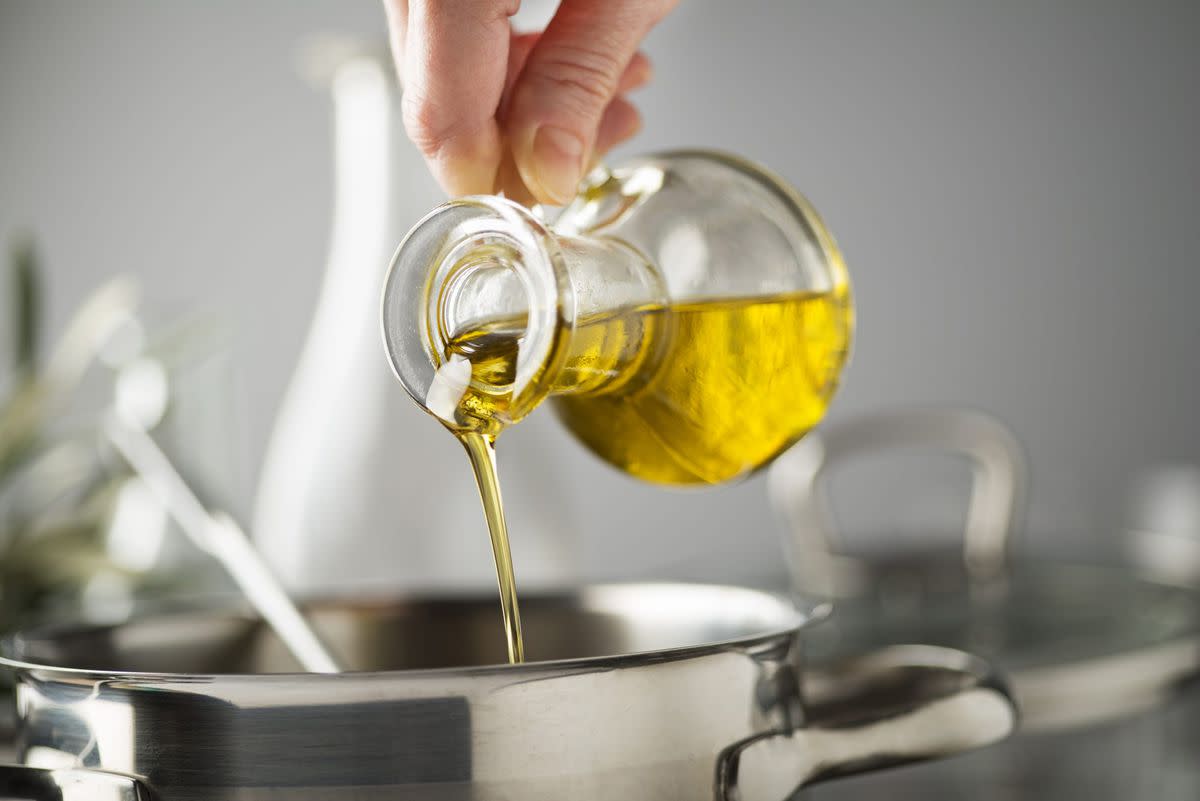Canola Oil vs. Vegetable Oil: Which One Should I Use?

dulezidar/Getty Images
TABLE OF CONTENTS
On This Page
What is Canola Oil?
What is Vegetable Oil?
What is the Difference Between Canola Oil and Vegetable Oil?
Can Canola and Vegetable Oil Be Used Interchangeably in Recipes?
How to Safely Store Vegetable and Canola Oil
Canola and vegetable oil have a lot in common—you might even confuse them from time to time if the bottles are side-by-side in your kitchen pantry. Both of these workhouse oils are pale yellow in color, neutral in flavor, inexpensive, and have high smoke points, which makes them good for high heat cooking like frying.
So what's the difference between these two oils, and why would you choose one over the other in the grocery store?
What is Canola Oil?
Canola oil, or rapeseed oil as it is more commonly known in Europe, is a type of vegetable oil that comes from the rape plant (Brassica napus). Canola's namesake comes from a mix of the words "Canada," where rapeseed is produced the most worldwide, and "oil." In fact, Canola oil was invented by Canadian scientists in the 1970s and was the product of crossbreeding to make a version of the rapeseed plant that wasn't toxic to humans.
The now common kitchen pantry oil is a great oil for cooking, as it has a high smoking point at 400 F. It has a mild taste, which makes it a good oil to use if you don't want to alter the taste of your dish. It is also considered to be a healthy oil, since it is very low in saturated fat, has zero trans fat, and is higher in monounsaturated fat which is great for heart health. Saturated fat is known to raise cholesterol levels, whereas monounsaturated fat can improve cholesterol levels and help in the prevention of heart disease—which makes this oil the best of both worlds.
What is Vegetable Oil?
It might be surprising to know that vegetable oil doesn't actually contain any vegetables. Instead of describing what is in the oil, the name's use is primarily to differentiate it from lard or animal-based oils. Vegetable oil is any oil that is derived from plants or seeds. This includes canola oil, soybean oil, olive oil, sunflower oil, avocado oil, coconut oil, and more. Most of the vegetable oils sold in grocery stores are just soybean oil, corn oil, or a combination of the two.
Like canola oil at 400 F, vegetable oil has a relatively high smoking point at 450 F. It has a mild taste, is fairly inexpensive, and is a good option for frying, sautéing, and baking. However, since the plants the oil is derived from can vary from bottle to bottle, you might not have as much control over the nutritional content and fats you are consuming.
What is the Difference Between Canola Oil and Vegetable Oil?
It all comes down to nutrition. Although canola oil and vegetable oil are both plant-based oils—canola oil comes from the rapeseed plant and vegetable oil is typically soybean-based or made from a blend of vegetable oils—they differ in their fat composition.
While plant-based fats are considered more heart-healthy than animal fats, canola oil is generally believed to be a healthier option because it is lower in saturated fat than vegetable oil. According to Cooking Light, "canola, like walnut oil, is one of the few oils that's rich in omega-3 fat ALA—and research shows it may help lower total and "bad" LDL cholesterol."
Can Canola and Vegetable Oil Be Used Interchangeably in Recipes?
The short answer is yes! Both of these oils are great options for various cooking methods such as frying, sautéing, and baking. Whether you are frying chicken or peanuts, baking a Hummingbird Cake, making a tasty stir-fry, or whisking up a simple vinaigrette, canola oil can be used in place of vegetable oil, or vice versa. While you might notice a slight difference in flavor if you did a taste test of both oils on their own, you shouldn't notice a difference in the flavor or texture of the final dish. However, If saturated fat is a concern, reach for the canola oil. Otherwise, you can cook with either oil with great results.
How to Safely Store Vegetable and Canola Oil
The best place to store your oils is in a dark, dry, and cool place, out of the line of direct sunlight and away from humidity. Oils should not be exposed to air, so make sure they are properly sealed after each usage. Oils that are stored for too long can become rancid from oxidation, and should not be used. If your oil smells bad or tastes bad, you should throw it out. If your oil bottle has residue left on the rim near the cap or the rest of the bottle, it's probably a good indicator that you should invest in some new oil. Always be sure to look at the best by date to know how long your oil will stay fresh when stored properly.

